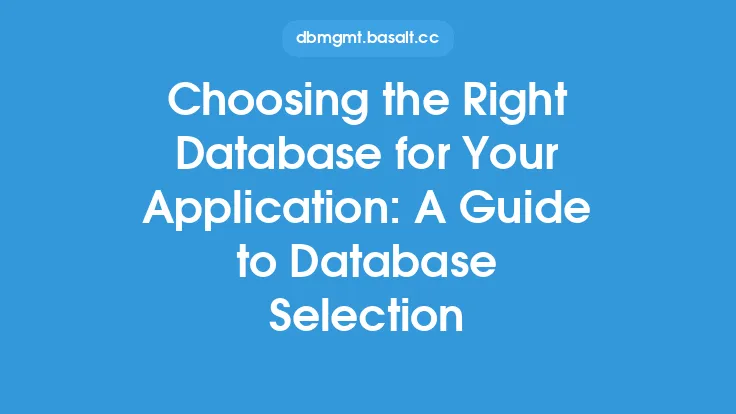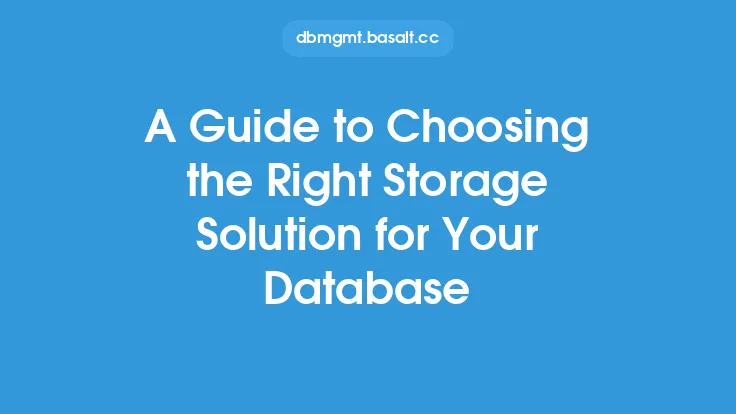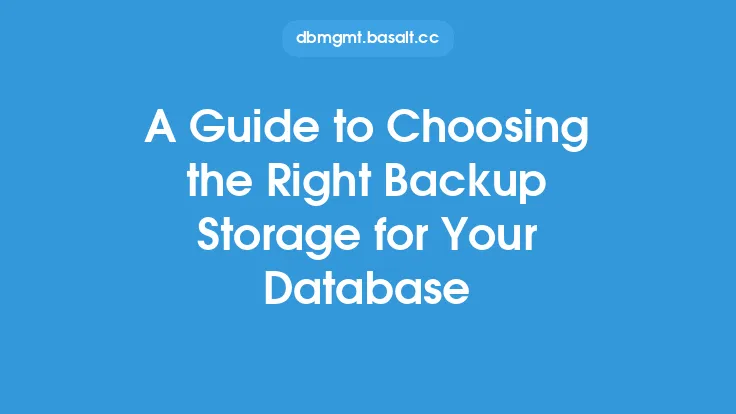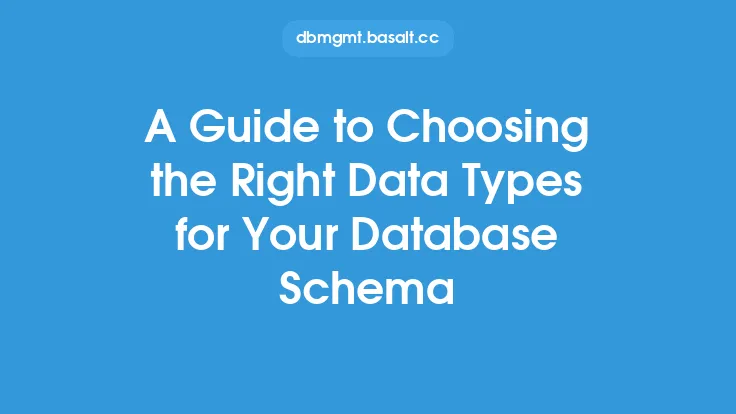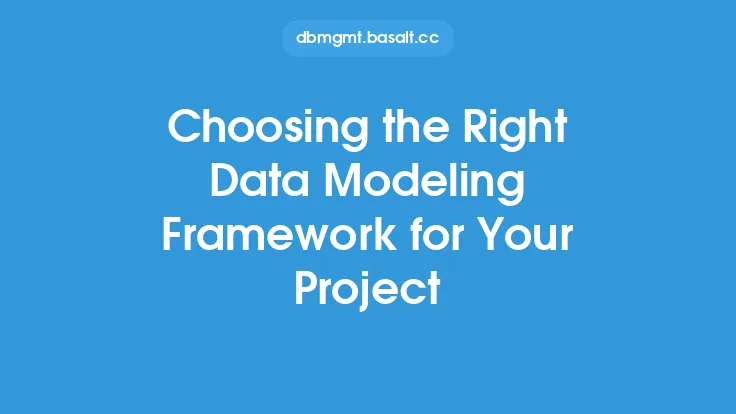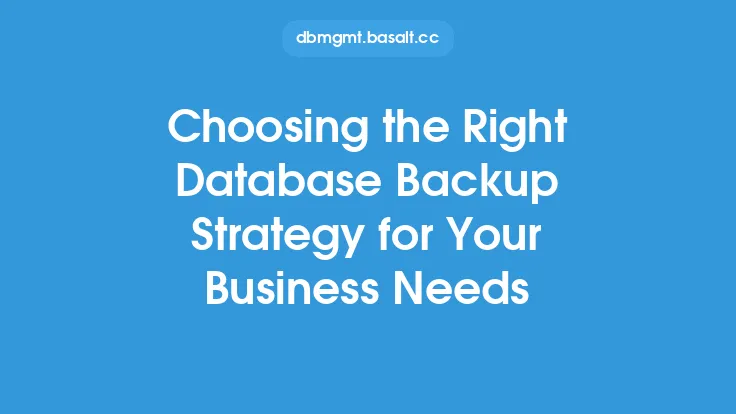When it comes to designing and implementing a database, one of the most critical decisions is choosing the right database model. A database model is a theoretical representation of the data and its relationships, and it serves as the foundation for the database's architecture. With so many different database models available, each with its own strengths and weaknesses, selecting the right one can be a daunting task. In this article, we will explore the different types of database models, their characteristics, and the factors to consider when choosing the right one for your database.
Introduction to Database Models
A database model is a way of organizing and structuring data in a database. It defines how the data is stored, accessed, and manipulated, and it provides a framework for the database's schema. There are several types of database models, including relational, object-oriented, hierarchical, network, and graph models. Each of these models has its own unique characteristics, advantages, and disadvantages, and the choice of which one to use depends on the specific needs and requirements of the database.
Relational Database Models
Relational database models are the most widely used type of database model. They are based on the concept of relations, which are tables that store data in rows and columns. Each row represents a single record, and each column represents a field or attribute of that record. Relational databases use a structured query language (SQL) to manage and manipulate the data, and they support complex queries and transactions. Relational databases are ideal for applications that require complex data relationships, such as customer relationship management (CRM) systems, enterprise resource planning (ERP) systems, and online transaction processing (OLTP) systems.
Object-Oriented Database Models
Object-oriented database models are designed to store and manage complex data structures, such as objects and classes. They are based on the principles of object-oriented programming (OOP), which emphasizes encapsulation, inheritance, and polymorphism. Object-oriented databases use a query language that is similar to SQL, but they also support object-oriented programming languages, such as Java and C++. Object-oriented databases are ideal for applications that require complex data modeling, such as computer-aided design (CAD) systems, geographic information systems (GIS), and multimedia databases.
Hierarchical Database Models
Hierarchical database models are designed to store and manage data in a hierarchical structure, with each record having a parent-child relationship with other records. They are based on the concept of a tree-like structure, with each node representing a record and each branch representing a relationship between records. Hierarchical databases are ideal for applications that require a simple, intuitive data structure, such as file systems, email systems, and document management systems.
Network Database Models
Network database models are designed to store and manage data in a network structure, with each record having multiple relationships with other records. They are based on the concept of a graph-like structure, with each node representing a record and each edge representing a relationship between records. Network databases are ideal for applications that require complex data relationships, such as social networks, recommendation systems, and expert systems.
Graph Database Models
Graph database models are designed to store and manage data in a graph structure, with each record having multiple relationships with other records. They are based on the concept of a graph-like structure, with each node representing a record and each edge representing a relationship between records. Graph databases are ideal for applications that require complex data relationships, such as social networks, recommendation systems, and expert systems.
Factors to Consider When Choosing a Database Model
When choosing a database model, there are several factors to consider, including the type of data, the complexity of the data relationships, the scalability requirements, and the performance requirements. The type of data is a critical factor, as different database models are better suited for different types of data. For example, relational databases are ideal for structured data, while object-oriented databases are ideal for complex, unstructured data. The complexity of the data relationships is also a critical factor, as different database models are better suited for different types of relationships. For example, hierarchical databases are ideal for simple, parent-child relationships, while network databases are ideal for complex, many-to-many relationships.
Database Model Selection Criteria
When selecting a database model, there are several criteria to consider, including data structure, data relationships, scalability, performance, and query complexity. The data structure is a critical factor, as different database models support different data structures. For example, relational databases support tables, while object-oriented databases support objects and classes. The data relationships are also a critical factor, as different database models support different types of relationships. For example, hierarchical databases support parent-child relationships, while network databases support many-to-many relationships. Scalability and performance are also critical factors, as different database models have different scalability and performance characteristics. For example, relational databases are highly scalable and performant, while object-oriented databases may be less scalable and performant.
Conclusion
Choosing the right database model is a critical decision when designing and implementing a database. With so many different database models available, each with its own strengths and weaknesses, selecting the right one can be a daunting task. By considering the type of data, the complexity of the data relationships, the scalability requirements, and the performance requirements, you can choose a database model that meets the needs and requirements of your database. Whether you choose a relational, object-oriented, hierarchical, network, or graph database model, the key is to select a model that provides a solid foundation for your database's architecture and supports the complex data relationships and queries that your application requires.
